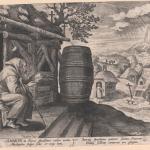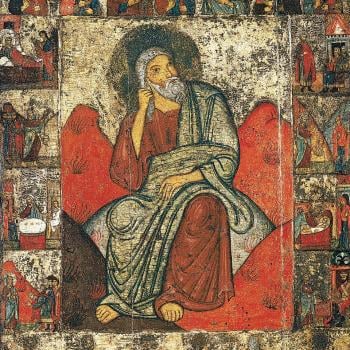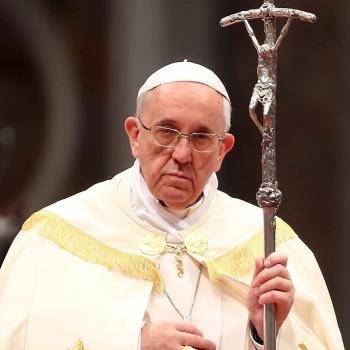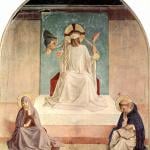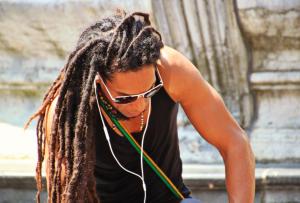
When we ignore history, the mistakes and sins of the past are bound to be repeated. When we think we no longer have to make restitution for the sins of the past, we find ourselves ignoring history, and so it should not be surprising we find ourselves replicating its evils. Catholics who, in theory, have learned that inculturation is important, and with it, the recognition of the dignity and values of the cultures around the world should be supported instead of repressed, often fail to follow their great principles. This is exactly what we see happening in South Dakota where an African American student was told he had to cut his hair, even though he has for years been growing his hair out to embrace his cultural tradition:
Braxton, who is Black, wears his hair in traditional African twists known as locs. The length of his hair hasn’t been an issue before, his mother Toni Schafer told The Argus Leader on Sunday. He has been in the Bishop O’Gorman Catholic Schools system since sixth grade, first attending St. Mary for sixth grade, then grades seven and eight at the junior high school.[1]
This should never have happened, as it is clear, Braxton’s rights have been violated. He is being told to comply with a cultural tradition not his own (and, as it turns out, he will not). We must understand, as Murjani Rawls points out, this is a problem which many African Americans have had to face for years:
Black Americans have long been subjected to hair discrimination, whether it be in corporate or school settings. For 14-year-old freshman Braxton Schafer, he has had his dreadlocks in the sixth, seventh and eighth grades while O’Gorman High School in South Dakota’s hair policy was in place. Schafer and his family stated there was never an issue until now. As the Sioux Falls Argus Leader reports, the school has said Schafer will have to cut his hair in adhere to the policy or leave the school.[2]
It is extremely disappointing to hear about this soon after Pope Francis, following the initiative of those who came before him, apologized to Indigenous Americans for the way they were treated by Catholics, that is, for the way they were forced to ignore and reject their cultural heritage. Catholic schools should be following the teachings of the church, but instead, it seems many just want to ignore them when they go against their own personal prejudices. This is exactly what we see happening in South Dakota, where it is clear, many Catholics, including Catholic school officials, reject Catholicism’s embrace of world cultures and instead want to limit what is approved to their own preferred cultural heritage. What is happening should not be ignored, treated as if it were insignificant, because forcing Braxton to cut his hair in this way repeats the policies of history which required Pope Francis’ apology. That is, Indigenous Americans were often forced to cut their own as a way to remove or “kill the Indian” in them:
Long hair was cut, given names were changed and traditional dress was banned at most of these schools, including Holy Rosary Mission. “I found it very ironic,” said a survivor of the mission about having his hair cut. “[They] told me one thing, and then they showed us Christ on the cross who had long hair.”[3]
It is amazing and sad that the policies which were put in effect to help force one cultural perspective, one cultural norm, a Western, European one, upon others, continues to be put in effect in South Dakota, showing that the underlying problem which created them in the first place remains in place. This is not, to be sure, what Cardinal Cupich, who used to be the Bishop of Rapid City, South Dakota, wanted, as he has been a strong fighter against racism:
Racism can be called our nation’s own specific “original sin.” The existence of slavery cast the shadow of hypocrisy over the otherwise noble proclamation of the rights to life, liberty and the pursuit of happiness in our Declaration of Independence. The greatest number of Americans killed in war to this day was during the Civil War, which had the conflict over slavery at its roots. For generations our political life was distorted by the influence of public officials whose foremost goal was to preserve the essence if not the form of slavery in a segregated and discriminatory social system.[4]
Thanks to the way he fought against racism, and its continuing legacy in the United States, it should be of no surprise that Cardinal Cupich was warmly welcomed and celebrated by Chicago’s Indigenous community. Sadly, once he left Rapid City, it seems the racism which he fought against was able to once again come out in the open, undermining the good work which he promoted. And so we now see, once again, cultural imperialism gaining power and authority within the South Dakotan Catholic community. Repeating a policy which was used to discriminate against and harm the Indigenous peoples makes it clear that the mistakes of the past, indeed, the sins of the past, have returned; the school should be swiftly condemned for what it did, and restitution should be made to the Shafer family because Braxton’s rights, rights which Catholicism teaches should not to be violated, were ignored:
The Church reproves, as foreign to the mind of Christ, any discrimination against men or harassment of them because of their race, color, condition of life, or religion. On the contrary, following in the footsteps of the holy Apostles Peter and Paul, this sacred synod ardently implores the Christian faithful to “maintain good fellowship among the nations” (1 Peter 2:12), and, if possible, to live for their part in peace with all men, so that they may truly be sons of the Father who is in heaven.[5]
Instead of looking after and promoting the needs of those who have suffered cultural repression, we find many Catholics finding excuse after excuse to justify their actions, even saying it is a form of discrimination to deny them the right to engage such cultural imperialism. Too many confuse their own cultural norms as universal laws, ignoring Catholic tradition and the way it has consistently fought against such confusion (as can be seen in the way St. Alphonsus Liguori denied the confusion many made with the so-called natural law with the eternal law). There is value to be had in all cultures, which is why no one culture should be repressed; there should not only be mutual toleration, but a mutual embrace between people of different cultures, so that they can learn to appreciate each other while still remaining true to themselves. Instead, it is clear, some people want to push rigoristic rules to promote their own cultural ideals, enforcing them upon others, and in doing so, risk being judged by the words Jesus’ used against some of the scribes and Pharisees of his day:
Woe to you, scribes and Pharisees, hypocrites! for you are like whitewashed tombs, which outwardly appear beautiful, but within they are full of dead men’s bones and all uncleanness. So you also outwardly appear righteous to men, but within you are full of hypocrisy and iniquity (Matt. 23:27-28 RSV).
South Dakota has a problem with racism. It does not want to acknowledge its past, nor the ways in which the racism of the past must be dealt with in order to make for a better, fairer future for all. Its governmental officials are trying to white-wash their history. Instead of listening to the church, many Catholics, including many officials, seem to follow the political ideology promoted in South Dakota. This, it should not be a surprise that we see the norms being promoted by South Dakotan officials being established in Catholic schools there. For many Catholics have not properly dealt with their history, and the racism which lay behind many of the ways Indigenous peoples were treated. The new push-back against such concerns has led many of them to think not only are they free to ignore Catholic teaching, they are free to embrace their prejudices and the racism which follows from them. Cardinal Cupich would not have supported this. Hopefully Bishop DeGrood will see the problem, the way Catholic teaching has been violated, and act accordingly; however, with the way he has already acted, such as promoting a religious liberty exemption for the COVID vaccine despite the fact Catholic teaching was not against but actually favored the use of that vaccine, there is much reason to fear he won’t.
[1] Morgan Matzen, “South Dakota High School Says Black student Must Cut His Hair For Dress Code” in USA Today (8-29-2022).
[2] Murjani Rawls, “South Dakota High School To Black Student: Cut Your Dreadlocks Or Leave Our School” in The Root (8-29-2022).
[3] Maka Black Elk, “Atoning For Sins Against Indigenous People Begins With Confronting The past. Red Cloud Indian School Is Showing The Way,” in America (10-8-2021).
[4] Cardinal Blase Cupich, “Racism And The Election” in America Magazine (10-27-2008)
[5] Nostra Aetate. Vatican translation. ¶5.
Stay in touch! Like A Little Bit of Nothing on Facebook.
If you liked what you read, please consider sharing it with your friends and family!


